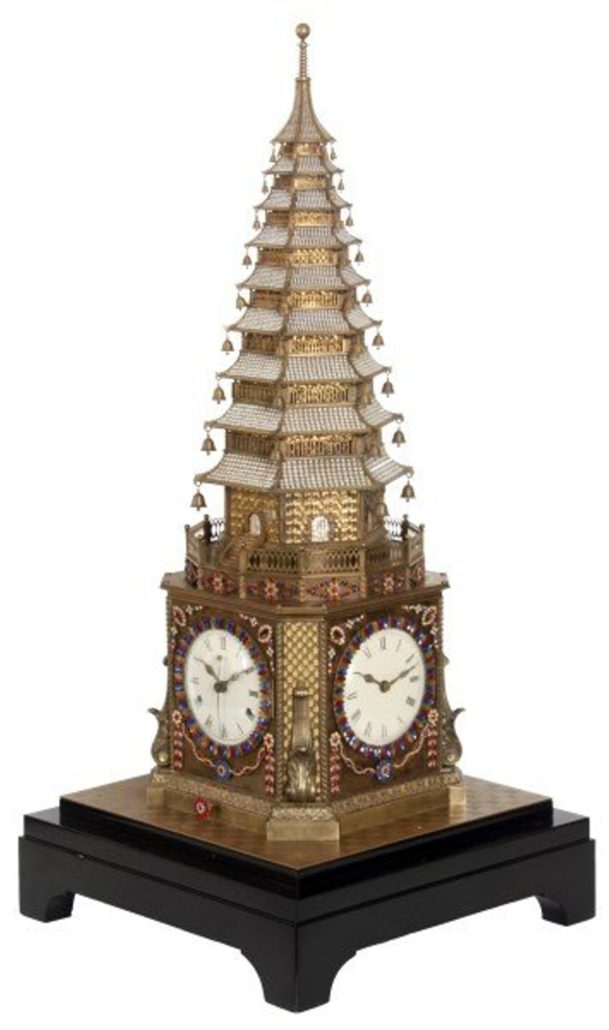
NEW YORK – China’s emperors of the Qing Imperial Court quickly became enamored of the intricate European clockwork mechanisms in English and French automaton clocks that began arriving on their shores in the late 1500s. By then, mechanical gadgets were an integral component of the East-West commercial trade. Automaton clocks were especially popular with Chinese officials, who received them as gifts from English diplomats and traders from the East India Company and other firms eager to curry local favor with them.
Clocks and timekeeping devices have been in use for centuries, and the first recorded automaton clock was said to have been made by Vitruvius, a renowned Roman engineer, utilizing gongs and trumpets to note time. Automaton clocks are among the most flamboyant of all clocks, and the ones made for the Chinese market merged Western and Chinese decorative elements and were dazzling to behold. The clock cases were usually finished in ornate ormolu and enhanced with vivid enamels and paste gems. The grandiose designs befitted the timepieces’ equally elaborate inner workings..
These objects of curiosity impressed the emperors as mechanical marvels and as luxury objects regarded as status symbols. Painstakingly crafted by hand, incorporating sophisticated and complex mechanisms, the clocks included music and animated figures with actions noted for their lifelike quality. The Chinese called these European clocks “zì míng zhōng” (self-chiming clocks) for their musical chimes and striking bells.
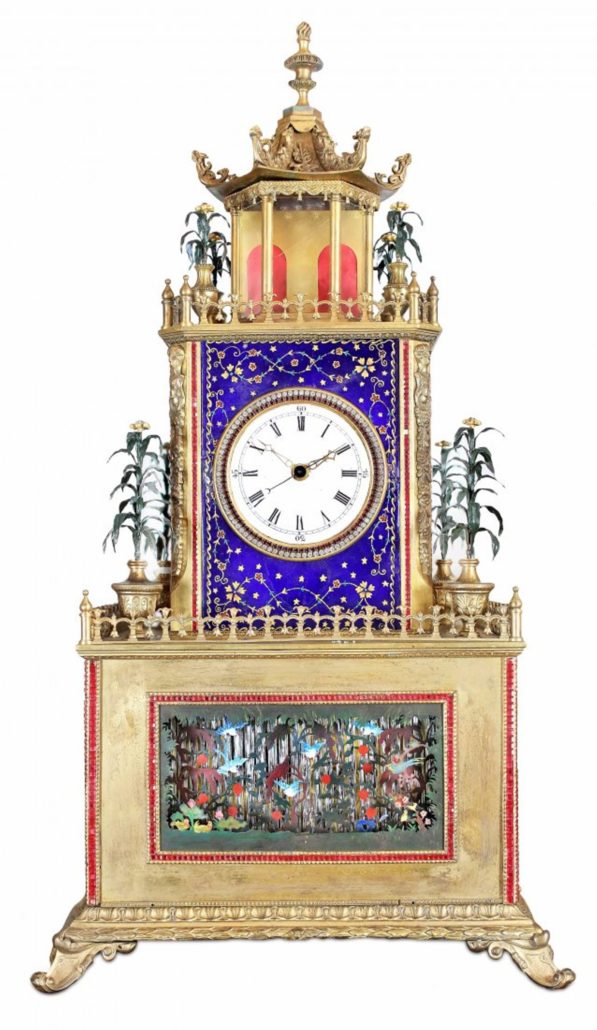
The Qianlong Emperor (r. 1736–95), in particular, was said to be a devotee, and the Imperial Palace at one time had more than 4,000 clocks that chimed throughout the day, according to the New Orleans Museum of Art (NOMA). NOMA hosted a 2017 exhibition titled “Automaton Musical Clock: A Mechanical Marvel,” which celebrated the restoration of the museum’s sublime automaton clock made in London circa 1800 for the Chinese market, likely by the noted clockmaker Henry Borrell. The elegant gilt and enamel clock has an ormolu (gilt bronze) case with guilloché enamel panels, glass jewels, and precise clockwork that triggers chiming bells and twirling bejeweled ornaments on the hour.
One of the best-known and most influential clockmakers whose works catered to the Far East was English goldsmith James Cox (circa 1723-1800). He shipped a large number of clocks to China in the second half of the 18th century. The Metropolitan Museum of Art in New York City has several automata clocks and watches by Cox in its collection.
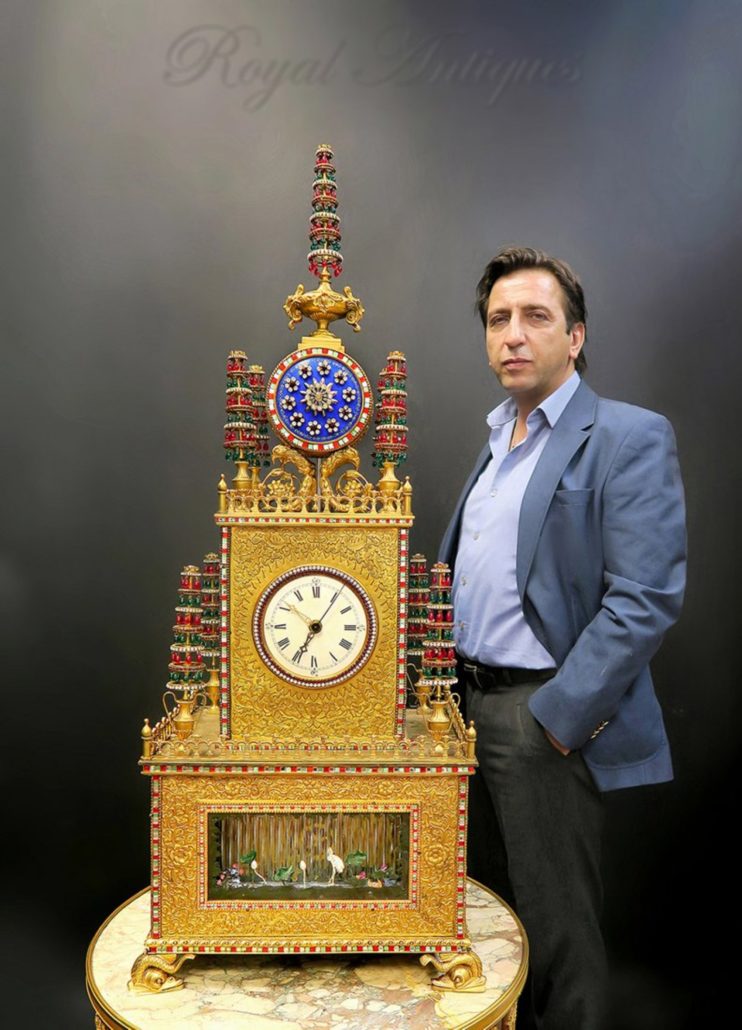
The English had dominated the clock-making industry in the late 17th century. “Other countries were as innovative and had makers who were as talented, but the great demand in England for timepieces forced the industry there to develop more quickly,” according to the book, Eastern Magnificence & European Ingenuity: Clocks of Late Imperial China by Catherine Pagani.
In the last few years, a few stunning automaton clocks have crossed the auction block, achieving robust prices owing to these clocks’ rarity and quality. Shown at the top of this page, an 18th-century English bronze pagoda-form clock that plays two songs, including the Chinese folk song “Mo Li Hua (Jasmine Flower),” was made especially for the Qing Imperial Court. It neared the $1 million mark when it brought $998,250, including the buyer’s premium, in a January 2017 auction at Fontaine’s Auction Gallery in Massachusetts. On the West Coast in June 2016, a triple-fusee automaton bracket clock (shown below) sold for $800,000 at Clars Auction Gallery.
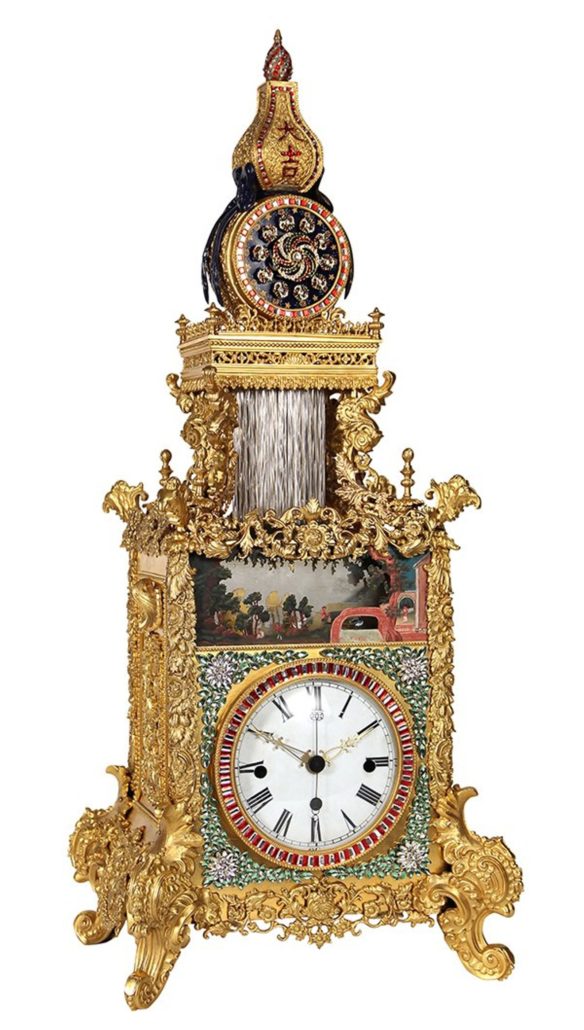
“[Automaton clocks] are very rare. It was very difficult to make them. The mechanisms took years to make,” said Victor Vala of Royal Antiques in Pasadena, California. “I only see one every couple of years. It’s difficult to find them in working order, but when they are in working order, it’s amazing.”
Enthralling for their beauty and technical superiority, automaton clocks are a constant source of delight as figures dance, trees spin and faux “water” cascades down a waterfall, all as music is playing. These exquisitely designed objects of curiosity seemingly bring the inanimate to life.
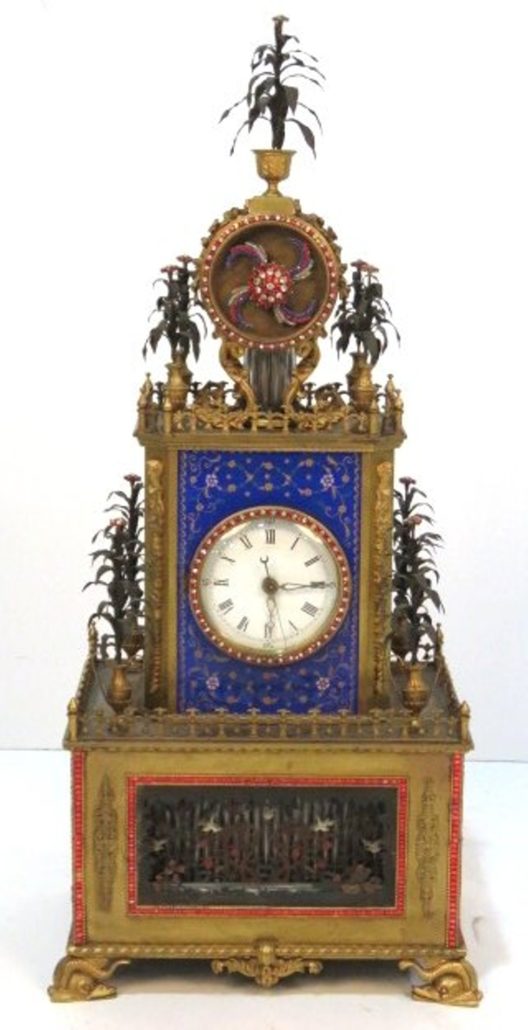
Click to view clocks on LiveAuctioneers.com.
# # #



